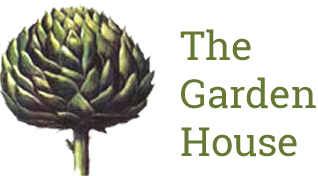Plant of the Month: Epimedium
Posted:22 April 2012
April is magical time as plants emerge from their winter dormancy, some producing a beautiful show of flowers.
One such, and a favourite of ours, is Epimedium x perralchicum Fröhnleiten with its thin, wiry flowering stems that uncurl from the base of the dormant plant and produce small, deep yellow flowers. As the flowers begin to fade the emerging foliage has bright, coppery red shading between conspicuous green veins, creating an impressive effect. This Epimedium grows in a wide range of conditions and will tolerate shade beneath trees making it an effective groundcover plant. It is evergreen, but in late winter the previous season’s foliage should be cut back so the emerging flowers can be seen to their full glory.
Common name: Barrenwort, bishops mitre – you will soon see why – the emerging leaves look just like a bishops hat!
Family: Berberidaceae this is the same family as Berberis and Mahonia, and one way of recognising plants in this family is the yellow pith in the centre of their stems.
Epimediums are clump-forming rhizomatous perennial that like moist, fertile soil and thrive in partial shade. They are fully hardy.
They are found in two main areas of the northern hemisphere the Mediterranean, where four species grow in light woodland and shady, rocky places, and temperate eastern Asia, where they grow in similar situations to the western group but require more shade and moisture (33 species come from China, four from Japan and one from Kashmir).
In spring the fresh green foliage is often tinged with pink, bronze or red. In summer the leaves are deep green, turning to rich tints of yellow, red and bronze in autumn. Small saucer- to cup-shaped flowers are borne from spring to early summer in various colours including yellow, white, pink, red and purple.
The name Epimedium, first used by the Greek herbalist Dioscorides in the first century AD, derives from epi, upon, and Media, the country of Medes, south west of the Caspian Sea.
Even though it was named by a herbalist and appears in several herbals, Epimedium was not widely used in the west. The Oriental species have been used medicinally for centuries – even in modern Chinese herbalism several species are still used to treat ailments including paralysis of the legs and high blood pressure, while in Japan they are used to treat hypertension.
E. x perralchicum is a robust, evergreen hybrid with glossy, deep green leaves which are an attractive bronze when young. Bright yellow flowers up to 2cm (3/4in) across are produced in spring, showing above the foliage for some time before leaf growth tends to cover them up. It tolerates dry soils in sun or semi-shade (producing fewer flowers under these conditions). On moister soil it will tolerate more sun.
Fröhnleiten is a German cultivar selected by Heinz Klose and has bigger flowers.
- For the best display of foliage and flowers clip back the old leaves in late winter or early spring before the flower spikes have formed. Where frosts are prolonged or severe provide a deep winter mulch to protect the rhizomes close to the surface.
- Mulch and feed regularly.
- Divide and replant tight clumps every three to five years to ensure good foliage and flower displays.
- Vine weevils are the worst pest, attacking the roots in particular. Slugs, snails and rabbits will also feed on the young growth.
- Propagate by division in autumn when roots can establish quickly and the foliage is tougher and less prone to damage. Young leaves are brittle and easily snap off.
Marchants Hardy Plants in Laughton has a great selection of Epimedium varieties it is also an exceptional nursery and garden, do visit…
Marchants Hardy Plants, 2 Marchants Cottages, Mill Lane, Laughton, E. Sussex BN8 6AJ
www.marchantshardyplants.co.uk
Below are nursery-owner and plantsman Graham Gough’s personal descriptions take your pick, they’re all great!
- E. ‘Amber Queen’ a cracking E. flavum hybrid, the main body of the large flower being amber coloured with hints of pink, pale yellow and white. 40cm.
- E. grandiflorum ‘La Rocaille’ ivory white suffused with palest celadon green, long spurred flowers. 35cm.
- E. g. ‘Lilac-Pink Form’ a form with small leaves and pert, spidery lilac-pink flowers.
- E. g. ‘Lilafee’ dark tinted new leaves act as a harmonious foil to the dainty violet-purple flowers. 25cm.
- E. g. ‘Rose Queen’ inappropriately named, the large spurred flowers of this strong growing form are actually a fine crimson-purple. 25cm.
- E. g. ‘White Queen’ a large flowered pure white form, yet to bettered. This, the true plant, is said to becoming rare. 30cm.
- E. membranaceum a beautiful Chinese species with burnished spiny margined foliage and insect like, long spurred pale yellow flowers for months. Evergreen. 30cm.
- E. x oemeiense ‘Myriad Years’ a naturally occurring hybrid in the wild (E. acuminatum x E.fangii) with handsome foliage and extraordinary, huge pale grey-pink and purple-spurred flowers. Requires a sheltered spot. 45cm.
- E. ogisui introduced in the 1990’s from the flora rich province of Sichuan, China, this beautiful large white flowered species remains uncommon and is further enhanced by the bronze tinted new foliage. 25cm.
- E. x perralchicum ‘Frohnleiten’ airy racemes of unspurred lemon yellow flowers in spring. The handsome evergreen leaves remain unblemished throughout winter, making it an altogether classy garden plant. 35cm.
- E. sp. Yunnan a refined and incredibly free flowering soft yellow, long spurred species from China with noticeably pale foliage. Patiently awaits a name.
- E. versicolor sulphureum evergreen foliage, copper and crimson tinted in winter, which should be removed in February to enjoy the clean yellow flowers in spring. 40cms.
- E. versicolor x versicolor subtly contrasted flesh pink and amber-yellow flowers, a perfect match for the young copper coloured foliage. 30cm.

